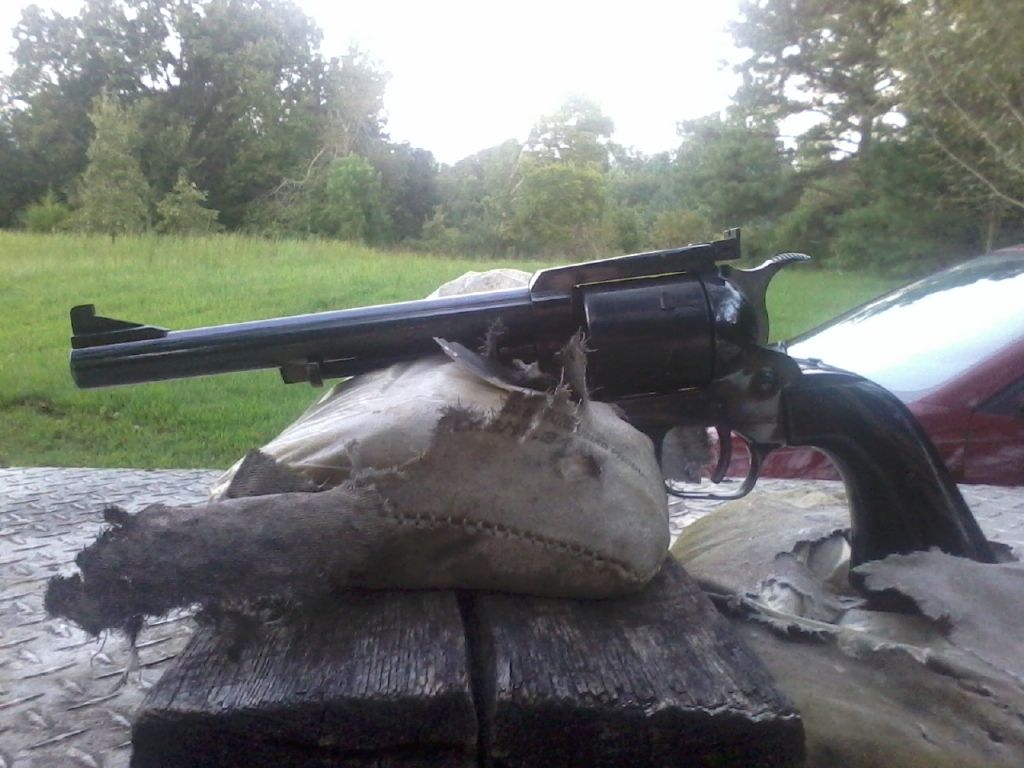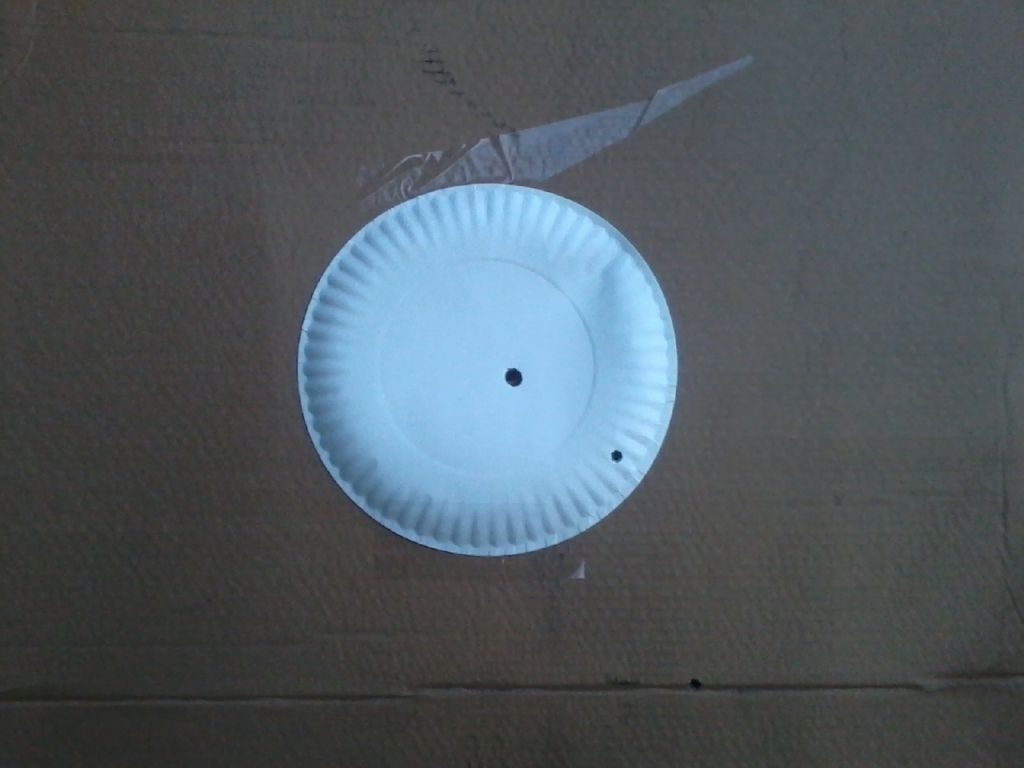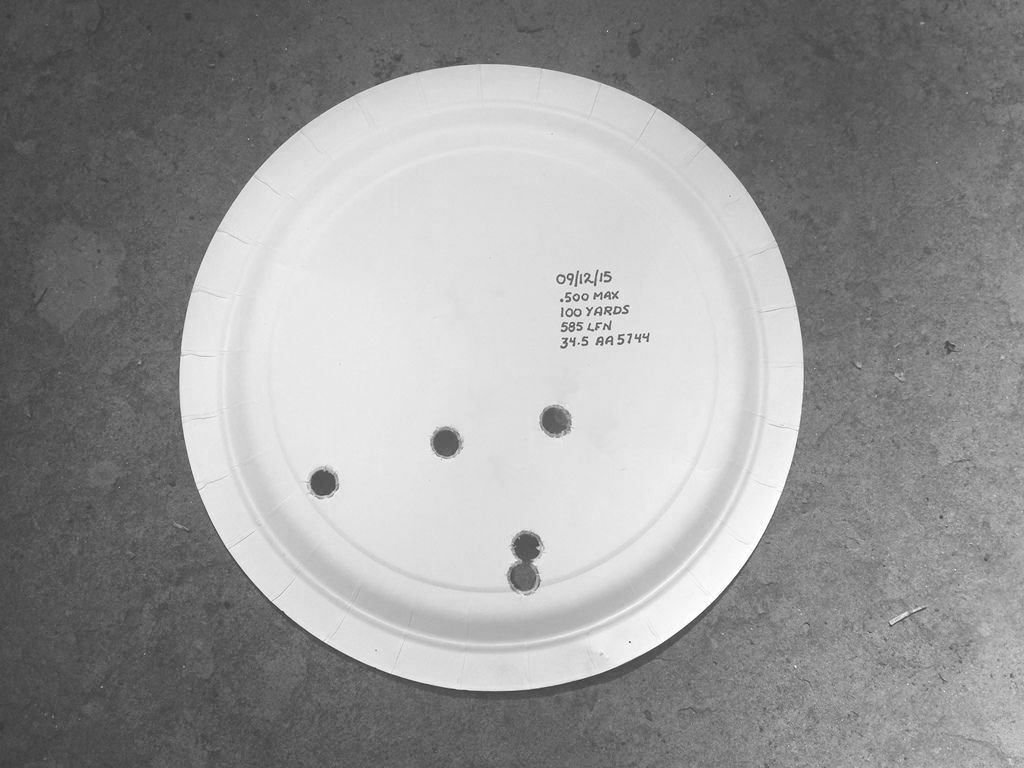|
|
Post by bradshaw on Sept 4, 2015 22:00:49 GMT -5
ranger499, B.... to quote my late friend William S. Burroughs, "It's an instrument. Play it!"
Exactly like music marksmanship is made in the present. To romance the past dream of the future is to miss. Coordination of trigger to sight kisses the target. Less is a miss.
serialsolver.... the Glock 27 is a chief among the tribe of so-called sub-compacts. As true of all these fat-free plastic frame guns, flinklock follow-through makes hits. Lousy trigger work sprays. These little pistols require discipline to know what they will do and you are working at it.
Good show.
rock hunter..... your Super 10-1/2" appears to be a production version of the prototype stainless 10-1/2-inch SBH, which had the standard ejector and ramp sight. There were two prototype stainless SBH's, with tapered 7-1/2 and 10-1/2 inch barrels. For no reason I was told, each sported a short cylinder. Both shot well, the 10-1/2 exceedingly so. In keeping with the needs of silhouette, I pulled for the 10-1/2 to reach production with untapered "bull" barrel, target front sight, and the long ejector of the .357 Maximum to completely clear cases on extraction. The year was 1982 and the KS411N "Silver Hornpipe" thundered across the firing line in 1983. Reckon your ramp sight tapered barrel short extractor stainless SBH is a rare bird these days.
David Bradshaw
|
|
|
|
Post by nockhunter on Sept 5, 2015 1:30:53 GMT -5
No kiddin,,,,, That is probably why I really haven't seen too many like mine.
Thanks for the info
Mike
|
|
|
|
Post by Cholla on Sept 5, 2015 2:36:09 GMT -5
I think some people here are missing the point, the challenge is 5 hits on a 10" paper plate at 100y. Mike Sarcasm is hard on the internet, so pick the correct reply from the choices provided below: Haha! Yeah right! Or You're completely wrong, please reread the first post in this thread a few times and then come back and post your 100 yard target! The Point of this thread was Get your hands off the keyboard and onto a gripframe and do some actual shooting! Lee does specify a target less than 12" wide. In my case, I deviated because it's what I had and I thought I might need it. Properly sighted in, my above group would have landed on a plate, in theory. Well DAMN! I completely missed the 12" target part. Sorry to have deviated, fellows. Back to the drawing board, or shooting range. That said, I'm really, really enjoying this thread. I grow weary of pretty pictures of revolvers that appear to rarely see the light of day. It's refreshing to see that folks are actually shooting their irons! Frankly, if I just want to see a photograph of a revolver laying on a stump, I'll request a catalog from the manufacturer. Cholla |
|
|
|
Post by nockhunter on Sept 5, 2015 2:45:33 GMT -5
I thought it was a 10" plate myself. It still is very challenging.
Mike
|
|
|
|
Post by seancass on Sept 5, 2015 11:02:17 GMT -5
... I just think shooting at a big backstop and the quoting a group size, is not the same as shooting at a specific target and hitting it multiple times. Kinda like shooting at a deer at 100y and hitting him in the hams just to say "but look a 3" group" when aiming for the boiler room. Mike [ ... ] All shot at 100y open sights at 9" paper plates. Six shots fired at each plate. Four best plates pulled from pile. Most other plates 2-4 hits. Sarcasm is hard and being concise makes me sound rude. I'm sorry. Good shooting with your Rugers! I disagree on the "big backstop" idea. I want to know where every shot went or it was just smoke and noise. If I hadn't used a large backstop, I would have never found a shot from my FA. It's not the gun's or my own inaccuracy, per say.(actually it is inaccuracy technically, what I do have is precision, I want precision). It's just that I chose a load that the sights couldn't support. I'm still experimenting with loads and bullets. Once I find a good(accurate) load, I can regulate the sights to that load. No reason to change the sights every range trip just to shoot some groups. If I find a load that shoots well, I can regulate the sights and shoot some plates. But I'd much prefer to ring steel, personally! Out of curiosity, can you see your black marks on the paper plates? My black bull on brown paper was just a tiny fuzzy dot over the front sight(appeared about 1/2-1/3 the width of the front sight, Tiny!). I had paper plates, and used them for initial sighting in at 25 and 50, but with the FA it was obvious even at 25 yards that I wouldn't be able to aim at the plate and hit the plate with my load. Incidentally, the Ruger 454 pictured regulated perfectly. I love this thread, especially all the knowledge in here. Possibly the most useful page on the web for long range handgunning. |
|
|
|
Post by serialsolver on Sept 5, 2015 11:20:31 GMT -5
I'm not sure I can see a paper plate at a 100 yards.  And I use a pond damn for a big backstop so I can walk the rounds on the target.  |
|
|
|
Post by nockhunter on Sept 5, 2015 20:28:46 GMT -5
... I just think shooting at a big backstop and the quoting a group size, is not the same as shooting at a specific target and hitting it multiple times. Kinda like shooting at a deer at 100y and hitting him in the hams just to say "but look a 3" group" when aiming for the boiler room. Mike [ ... ] All shot at 100y open sights at 9" paper plates. Six shots fired at each plate. Four best plates pulled from pile. Most other plates 2-4 hits. Sarcasm is hard and being concise makes me sound rude. I'm sorry. Good shooting with your Rugers! I disagree on the "big backstop" idea. I want to know where every shot went or it was just smoke and noise. If I hadn't used a large backstop, I would have never found a shot from my FA. It's not the gun's or my own inaccuracy, per say.(actually it is inaccuracy technically, what I do have is precision, I want precision). It's just that I chose a load that the sights couldn't support. I'm still experimenting with loads and bullets. Once I find a good(accurate) load, I can regulate the sights to that load. No reason to change the sights every range trip just to shoot some groups. If I find a load that shoots well, I can regulate the sights and shoot some plates. But I'd much prefer to ring steel, personally! Out of curiosity, can you see your black marks on the paper plates? My black bull on brown paper was just a tiny fuzzy dot over the front sight(appeared about 1/2-1/3 the width of the front sight, Tiny!). I had paper plates, and used them for initial sighting in at 25 and 50, but with the FA it was obvious even at 25 yards that I wouldn't be able to aim at the plate and hit the plate with my load. Incidentally, the Ruger 454 pictured regulated perfectly. I love this thread, especially all the knowledge in here. Possibly the most useful page on the web for long range handgunning. No need to apologize. The point I was trying to get across, was the spirit of the challenge "paper plate (9",10",12" or what ever) at 100y iron sights". I also shoot with a big cardboard back ground, too see impacts and adjust accordingly. Sort of able to see the black at that distance. I just tried something quick when I got to the range. I may try a 1-2" black band around the circumference and see how that does. I've always liked shooting handguns at long distances. Whenever I would go to the range I would lob shots at what ever steel they had at almost any distance. When I would get with a co-worker I would suggest we try to "ring some steel", they would laugh, "you can't hit that from here with that". My club had a steel ram at 200y, I hit that thing with every handgun I owned, 22rf-45 colt, not every time, but with a good spotter we would walk them in. They had a blast and changed their minds about how far a handgun can be lethal. Good shooting Mike |
|
|
|
Post by nockhunter on Sept 10, 2015 1:24:28 GMT -5
rock hunter..... your Super 10-1/2" appears to be a production version of the prototype stainless 10-1/2-inch SBH, which had the standard ejector and ramp sight. There were two prototype stainless SBH's, with tapered 7-1/2 and 10-1/2 inch barrels. For no reason I was told, each sported a short cylinder. Both shot well, the 10-1/2 exceedingly so. In keeping with the needs of silhouette, I pulled for the 10-1/2 to reach production with untapered "bull" barrel, target front sight, and the long ejector of the .357 Maximum to completely clear cases on extraction. The year was 1982 and the KS411N "Silver Hornpipe" thundered across the firing line in 1983. Reckon your ramp sight tapered barrel short extractor stainless SBH is a rare bird these days. David Bradshaw Hey Dave can you elaborate. Do you have any more info on my 10.5" Super Blackhawk? It appears to have been shipped in 1982. I can't seem to find any info online. Mike |
|
|
|
Post by bradshaw on Sept 10, 2015 21:16:17 GMT -5
Mike.... cannot verify your gun was shipped 1982, as the the first stainless SBH should have been the KS411N bull barrel silhouette model, a.k.a. "Silver Hornpipe." Perhaps another varmint of the forum can throw in. Please post photos of your revolver. Most certainly it doesn't have the short cylinder of the one-each 7-1/2 and 10-1/2 inch prototypes.
David Bradshaw
|
|
|
|
Post by nockhunter on Sept 10, 2015 21:26:04 GMT -5
Dave
The pic of my gun is on page 6 of this thread, I looked up the serial number on the Ruger site and 1982 was the ship year.
Mike
|
|
Deleted
Deleted Member
Posts: 0
|
Post by Deleted on Sept 11, 2015 10:40:21 GMT -5
here is my attempt gun was my seville 44 magnum with oregon trail 310 trueshot 21.5 grains h110 starline brass and cci 350 primer turned out that i had a loose front gripframe screw. my first shot and the group. will go back at it this afternoon with all the gripframe screws loctited.    |
|
|
|
Post by Lee Martin on Sept 15, 2015 20:01:35 GMT -5
5-shots, 100 yards bench rested Ruger .500 Maximum Bullet - 585 gr Martin LFN Powder – 34.5 grs AA 5744 Brass - Starline Primer - CCI Large Rifle Velocity – 1,215 fps (peak for this powder)   I thought I’d submit more than a target today. “Load Testing” – I always get a kick out of this phrase tied to handguns. It suggests narrow windows in which a bullet will perform. Inputs like charge weight, primer type, and crimp make or break it down range. I don’t buy that, at least not in totality. David Bradshaw and I spoke recently and I ran something by him. That something is counter to entrenched reloading principles. Always opened minded and backed by years of real-world shooting, David reinforced some of my ideas. So here goes nothing. Fundamentally, precision revolver shooting hinges on three things: 1) The shooter’s skill, technique, and ability to repeat that technique shot after shot. Skill involves more than gripping the gun and squeezing the trigger. Go 100 yards out and the importance of target visualization, sight alignment, and breathing get amplified. 2) The revolver. It should be correct with respect to barrel quality, the forcing cone, throat size, exit alignment to the bore, trigger, sights, etc, etc. If you’ve read Bradshaw’s posts you know this is a far reaching topic. 3) The bullet. Not only must it be sized to match the gun, it has to be dynamically balanced. If minor changes in speed (ie, charge) cause stability shifts, I’m not shooting it. Evaluating small differences in powder weight, spark, or crimp in handguns is difficult. No matter how steady you are, nerves, muscle tension, and respiration aren’t static. That’s why I’m wary when folks move one grain and claim groups radically open or close. But suppose they do? In those cases I’m left to believe it’s the shooter or a marginally stable bullet (point #3). This 585 grain LFN tends to validate the theory. I’ve fired it from three guns. The .500 Maximum shown here, a .50 Alaskan BFR, and a Siamese Mauser converted to .50 AK. Mechanically true and precisely assembled, all shoot exceptionally well. Taken to 100 yards they like some bullets and love others. Case in point, CP’s 525 gr WFN shines at 50 yards and wanders at 100. I’ve swapped powders and adjusted velocities in an attempt to settle it. No luck though, the 525 won’t print reliably tight at 100. Enter the 585 LFN. I designed it for that distance, further separating COF & COG and reducing the meplat. I also increased the driving band for more ogive support. For every velocity between 800 and 2,000 fps it groups. Atop the .500 Max the 585 seems indifferent to 4227, 5744, and 1680. Providing the burn rate suits the case, charge windows can be wide with this slug (you’ll notice H110 & W296 aren’t mentioned. They tend to be a bit fast for 1.60” brass and erratic). Now this isn’t isolated. I’ve experienced the same with certain .357, .41, and .45-caliber bullets. Of late a 290 gr LFN has been outstanding in my 5-shot .41 Magnum/.414 Martin. Pour a reasonable burn rate and charge under it and it performs. Blue Dot, 2400, H110, IMR 4227, AA#9, and so on. Velocities are anywhere from 900 fps to 1,400 fps. The gun is a real shooter. If I’m consistent for five pulls at 100 paces it rewards me. To further test the 290 I sized some for my .405 Winchester. Propelled to 1,900 fps from a Ruger No. 1 and they went MOA. That’s six different powders, three cartridges, two types of primers, and multiple crimp profiles. Of course regulating loads weighs heavily into rifle accuracy. There we’re talking about much higher velocities and longer barrels. Harmonics and node mapping must be addressed for optimal precision. But trying to time bullet exit at 1,200 fps in a 5” barrel? Don’t waste your time. If you’re holding the gun, what makes us human will override even the most OCD reloader. In conclusion, choose a proven revolver, bullets that fly well at distance, size them accordingly, and practice...a lot. -Lee www.singleactions.com"Chasing perfection five shots at a time" PS - glad to see others trying the 10" paper plate. |
|
cmillard
.375 Atomic
   MOLON LABE
MOLON LABE
Posts: 1,997
|
Post by cmillard on Sept 15, 2015 20:48:36 GMT -5
fine shooting!!
|
|
|
|
Post by contender on Sept 15, 2015 21:15:03 GMT -5
Excellent review Lee!!!
|
|
|
|
Post by nockhunter on Sept 15, 2015 22:25:49 GMT -5
I like it,shootin and gun.
mike
|
|